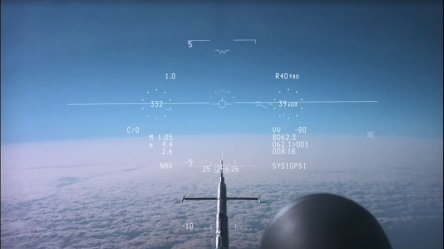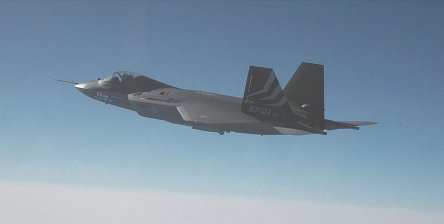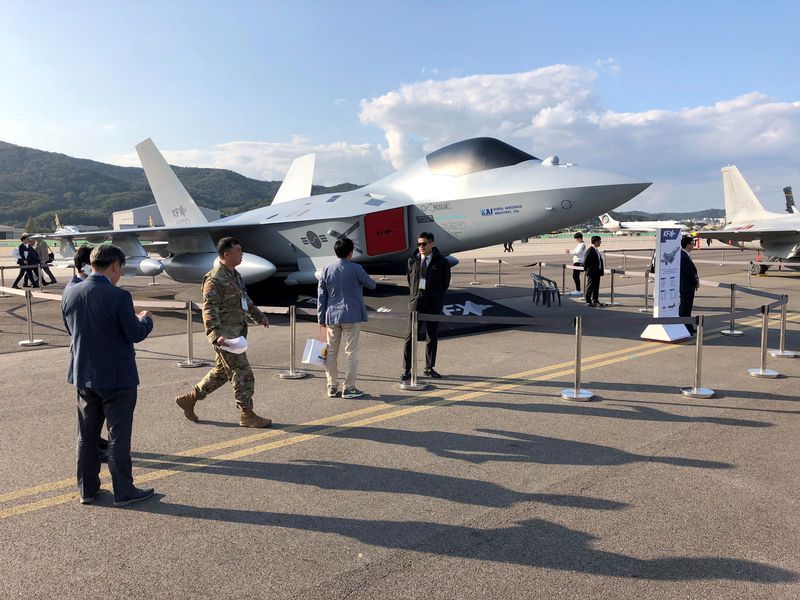Korea's KF-21 fighter jet succeeds in maiden supersonic flight
January. 17. 2023
National2023-01-17 18:53
|
|
| This photo shows the prototype of the KF-21 Boramae surpassing Mach 1 during a flight, Tuesday. Courtesy of DAPA |
By Kang Seung-woo
The KF-21 Boramae, the nation's first domestically developed fighter jet, successfully flew at supersonic speeds for the first time, Tuesday, the state arms procurement agency said.
Securing supersonic capability is a major part of the project as it means key functions work smoothly irrespective of flight speeds.
According to the Defense Acquisition Program Administration (DAPA), the prototype of the 4.5-generation fighter jet surpassed Mach 1 at an altitude of 40,000 feet at 3:15 p.m. after it took off at the third Flying Training Wing of the Air Force in Sacheon, South Gyeongsang Province at 2:58 p.m. The warplane landed at 3:54 p.m. after flying over the country's southern waters.
Since its maiden flight in July 2022, three prototypes of the aircraft, manufactured by Korea Aerospace Industries (KAI), have flown over 80 times at speeds of less than Mach 1. KAI produced six prototypes and the third successfully conducted its first flight earlier this month.
DAPA said the supersonic flight has two important implications in terms of the research and development of the aircraft.
"First, the flight confirmed that the KF-21 has structural stability at supersonic speeds," it said.
According to DAPA, when an aircraft exceeds Mach 1, shock waves occur in the plane and the unstable surrounding airflow can have a significant impact on the structural integrity of the jet.
"The KF-21's normal flight that overcame shock waves shows its structural stability can be maintained at supersonic speeds," it added.
The other achievement is that the KF-21 has become the first domestically developed aircraft to reach supersonic speeds.
"In the past, the KAI T-50 Golden Eagle exceeded Mach 1 in 2003, but the supersonic trainer was co-developed with U.S. Lockheed Martin using some of the U.S. firm's technologies, which is different from the KF-21's supersonic flight," it said.
"Korea now has a supersonic aircraft developed with domestic technologies."
|
|
| The first prototype of the KF-21 Boramae flies over Sacheon, South Gyeongsang Province, Tuesday. The Defense Acquisition Program Administration said the fighter jet surpassed Mach 1 during the flight. Courtesy of DAPA |
With the supersonic breakthrough of the KF-21, Korea has an aircraft developed with domestic technology that can fly faster than the speed of sound.
Defense Minister Lee Jong-sup hailed the development as a historic feat.
"Through the success of the supersonic flight, our military further solidified the foundation to construct a robust fighting force based on science and technology," Lee was quoted by DAPA as saying.
"We also took one step further to the goal of becoming the world's fourth largest defense exporter."
The KF-21 project, formerly known as KF-X, which was aimed at manufacturing a fighter plane with higher capabilities than a KF-16 fighter, was initiated in March 2001 by late President Kim Dae-jung. The Air Force plans to secure 120 advanced multi-role fighter jets by 2032 to replace its aging fleet of F-4s and F-5s under the project.
Korea and Indonesia signed a deal in 2010 to cooperate on the project, under which Jakarta would fund 20 percent of the total development cost of 8.8 trillion won ($7.1 billion), in exchange for a number of planes that would be manufactured there for the Indonesian Air Force, as well as for technology transfer.
A prototype of the KF-21 Boramae flies over Sacheon, South Gyeongsang Province, Tuesday. The Defense Acquisition Program Administration said the fi...
m.koreatimes.co.kr











